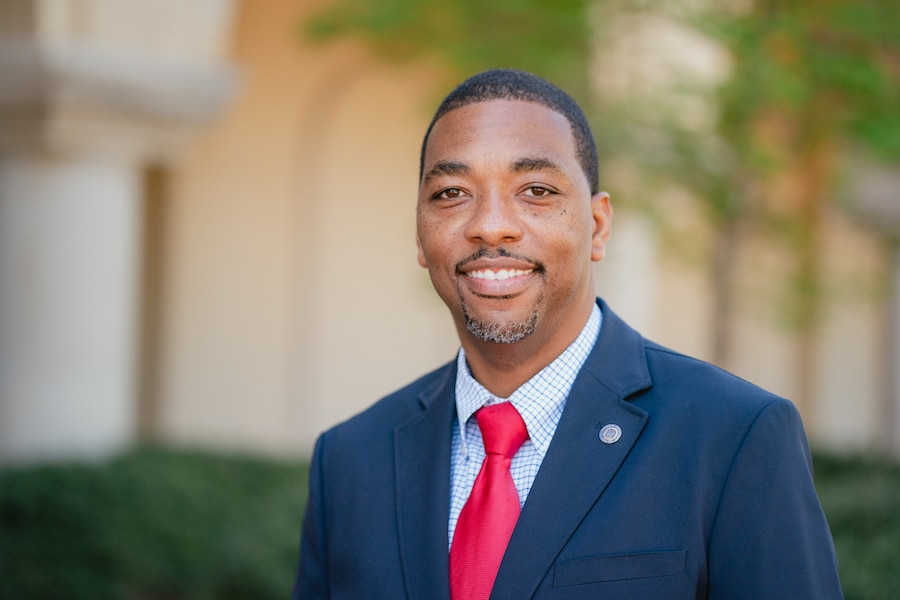|
There is no magic formula for establishing or maintaining an ethnically diverse congregation, but three Texas pastors agree prayer and a membership willing to accept people of differing ethnicity are key elements to the success of such a church. Even with a population that is 80 percent Hispanic, El Paso churches still have the potential for being ethnically diverse. Fort Bliss Army Base, with its diversity, an influx of Filipino teachers, and a few blacks and whites can make an El Paso church anything but homogeneous. But that is not what Rix Tillman found when he accepted the pastorate at Immanuel Baptist Church in December 1994. The congregation, he said, had an average age of 66 years, was predominantly white, with a “scattering” of black retired military people; it looked nothing like the Hispanic and black neighborhood around it. “It was definitely a blue-hair church,” said Tillman, recalling his first impressions of the 500-member congregation. “They had a reputation around town as an ‘old people’s church.’ “ That same year, Pastor Terry Blankenship found himself in a similar situation when he became pastor of Bethany Baptist Church in Dallas. The neighborhood around the church had been changing for 20-30 years from white, suburban middle class to black and Hispanic middle class. But the faces within the area’s churches did not reflect those changes, Blankenship said. Bethany Baptist was majority Anglo, with a few black members. It had once run 750 in membership but was down to a fraction of that when Blankenship came on as senior pastor. From the outset of their new pastorates, Tillman and Blankenship knew there would be forces to contend with if they were to succeed in making their respective churches representative of the communities. Tillman said the Immanuel congregation was deacon led, “with a select group of about 12 people that ran everything.” Before accepting the job at Bethany, Blankenship had been warned he would have a difficult challenge getting the church to change. Shortly after arriving, Blankenship said he realized about five to six families would have to leave Bethany before the church’s neighbors would be made welcome. He arrived in July and by December those families were gone. Blankenship’s goal was not to see members leave, but to draw new ones in. But, he admitted, “Sometimes you have to subtract in order to add.” Change came gradually for both churches. Blankenship noted that it took 10-20 years before Gentile and Jewish believers of the first church began to accept each other as social and spiritual equals. “Church is changed by increments ? it doesn’t happen over night,” he said. He and Tillman said it was vital for attitudes to change within their congregations. Tillman started by “outlawing the ‘C’ word.” He changed “committee” to “ministry team.” Then he began peppering his sermons with the word “exciting” because, he admitted, the church was “far from exciting.” “It went over like a lead balloon,” he said with a laugh. Some elderly women in the congregation even feared he was trying to make the church charismatic. The pastor said he was simply trying to get people enthusiastic about their faith so they might be a dynamic witness to the younger people he hoped to draw into the church. Eventually, Tillman got the moniker to stick, even changing the name of the church to Exciting Immanuel Baptist Church.
Most Read
Bradford appointed dean of Texas Baptist CollegeFORT WORTH—Carl J. Bradford, assistant professor of evangelism and occupant of the Malcolm R. and Melba L. McDow Chair of Evangelism, has been appointed dean of Texas Baptist College, the undergraduate school of Southwestern Baptist Theological …
By
Ashley Allen
By
Baptist Press
Explore more Southern Baptist news and history with us.Discover our online home of Texan Newsjournal editions from years past. 
Contact UsPO Box 1988 817-552-2500 Quick LinksCurrent Events. Relevant Topics. Gospel Stories.
Sections
Featured
|













